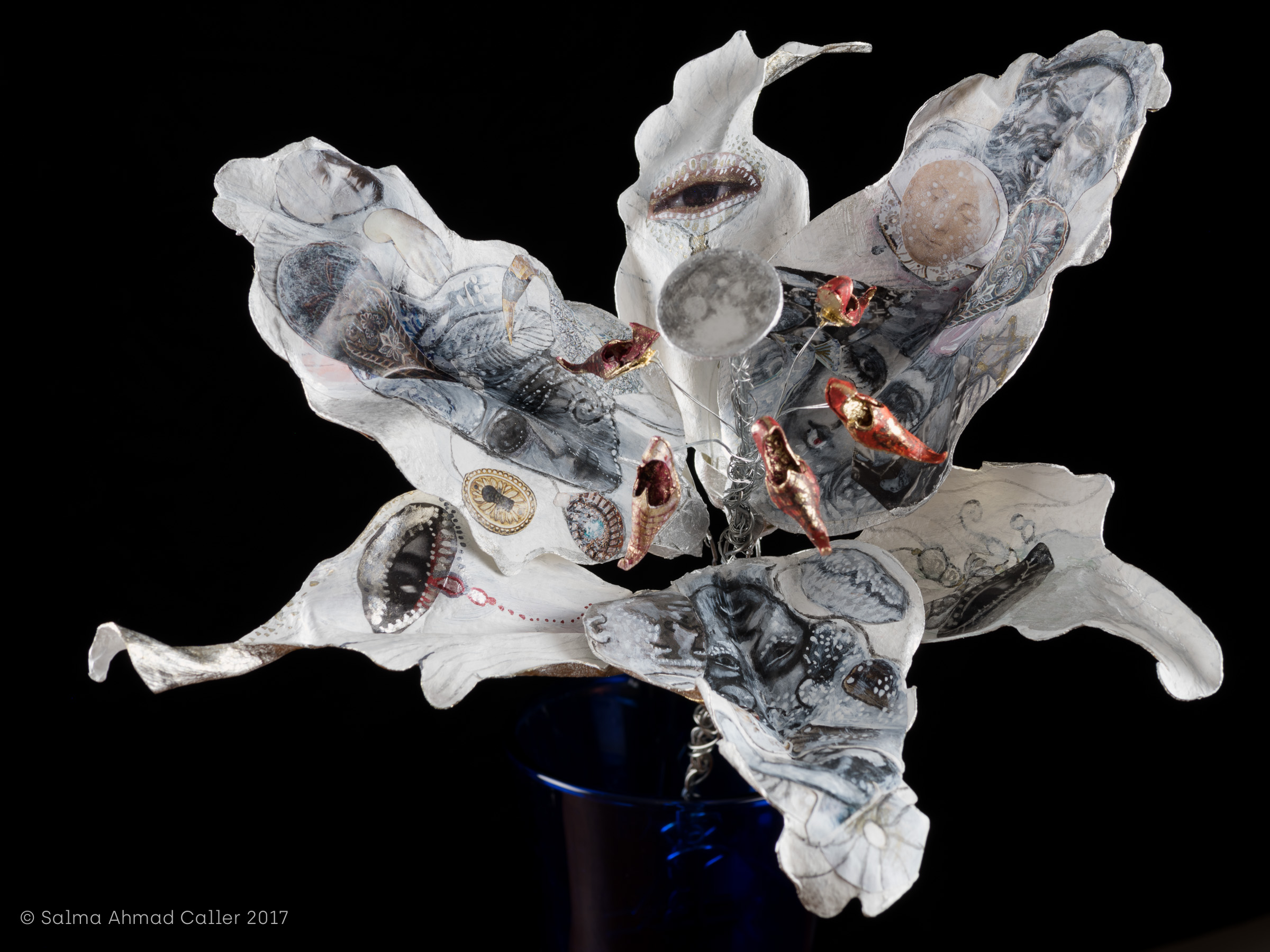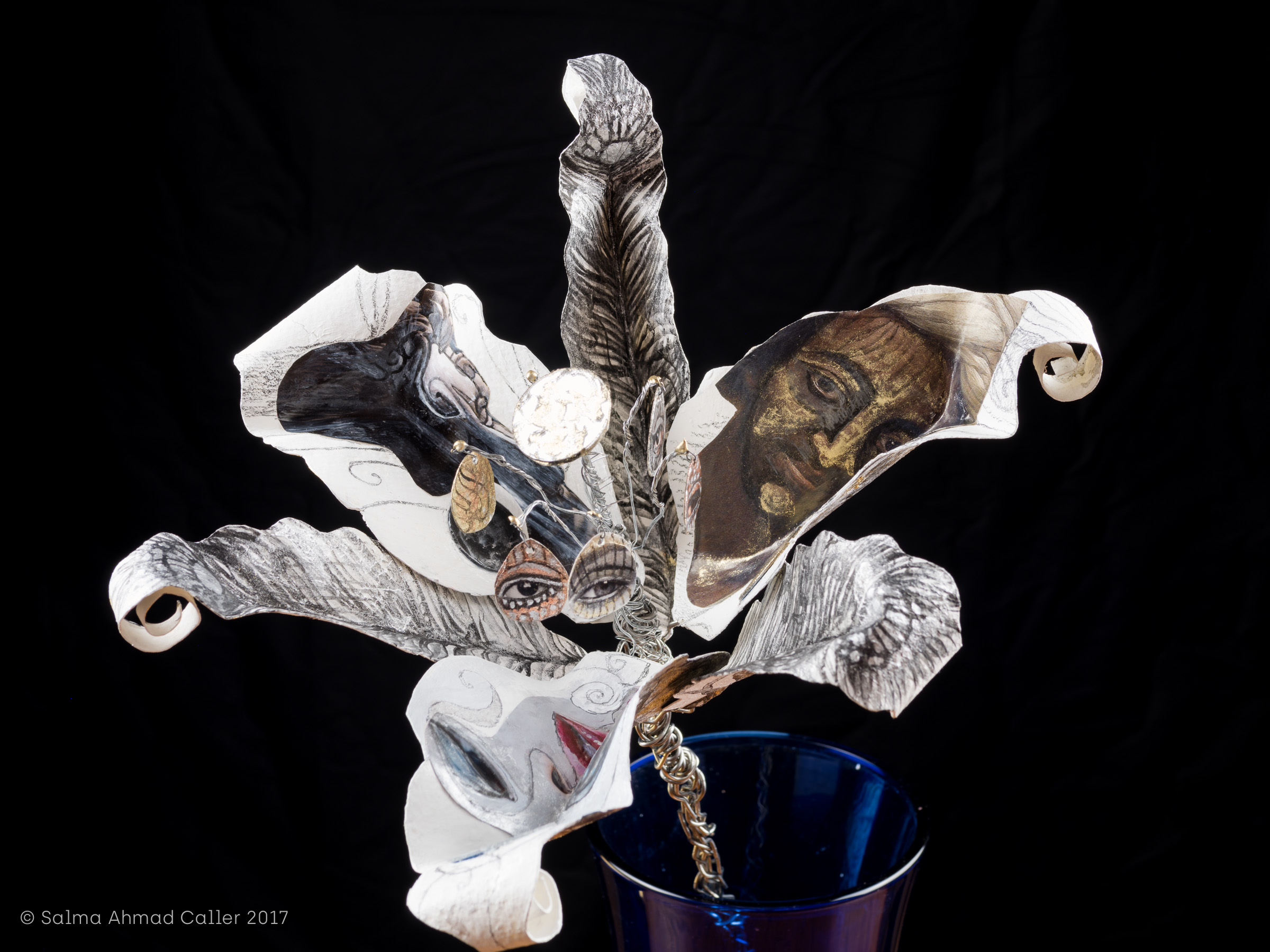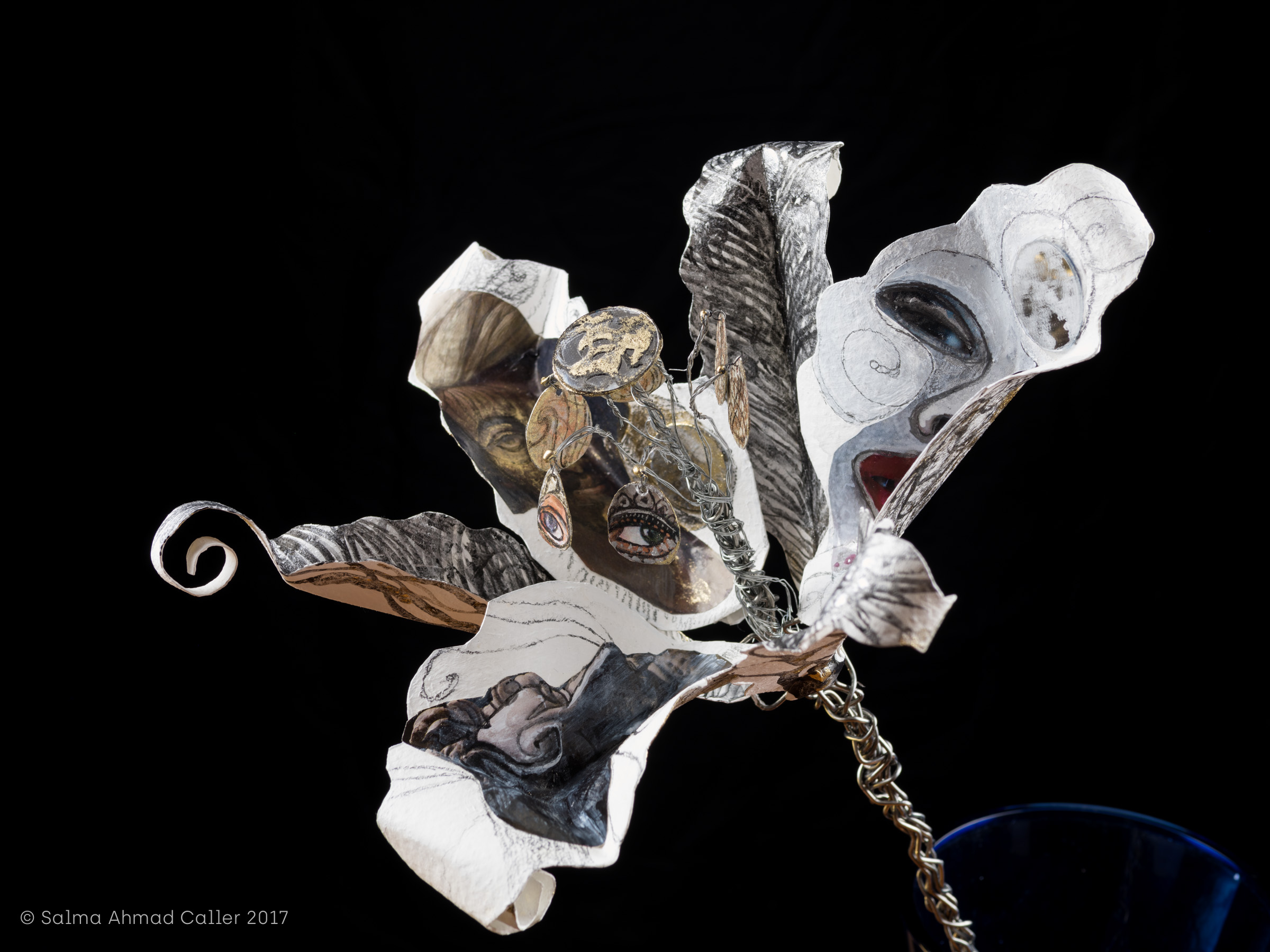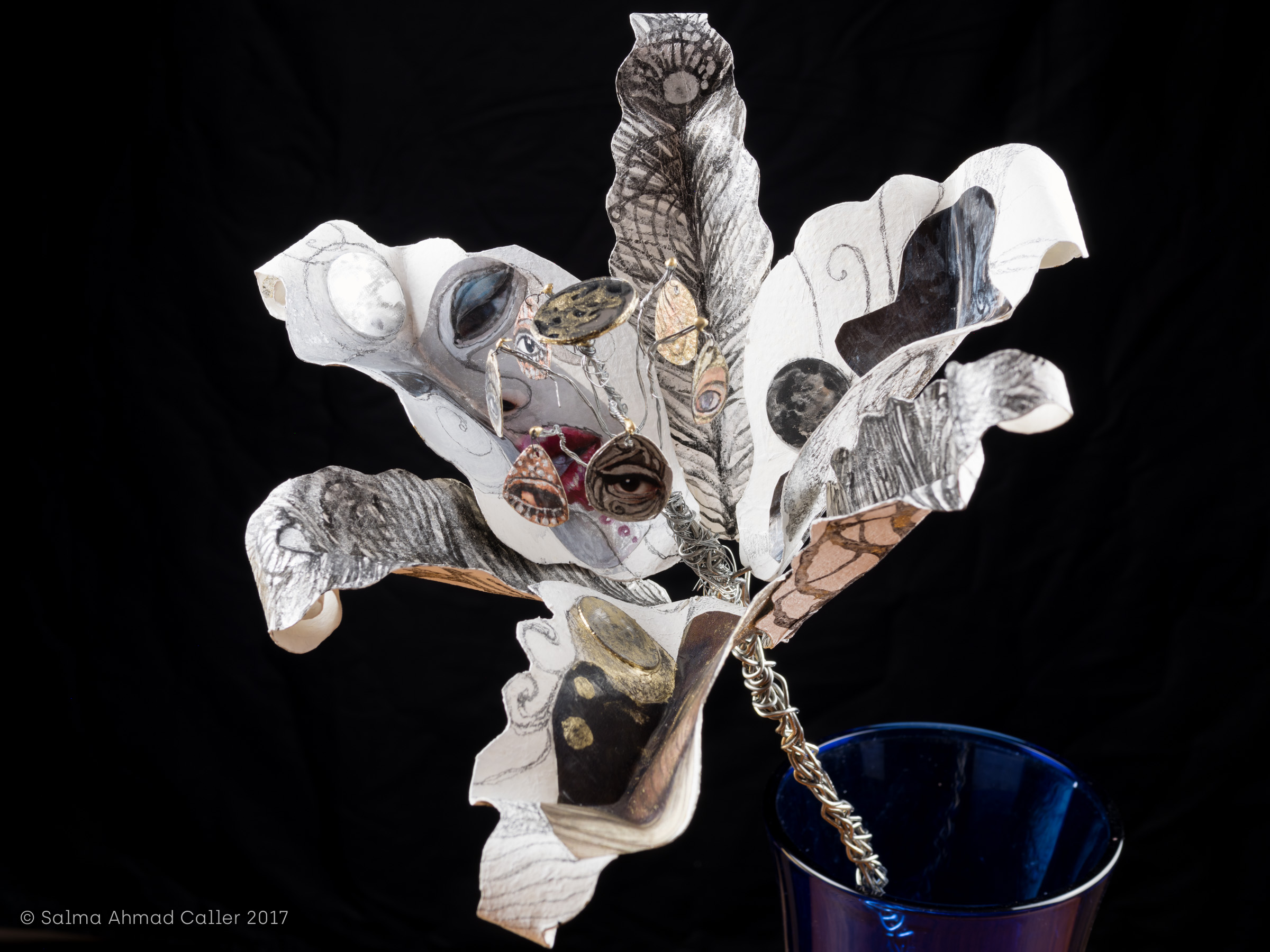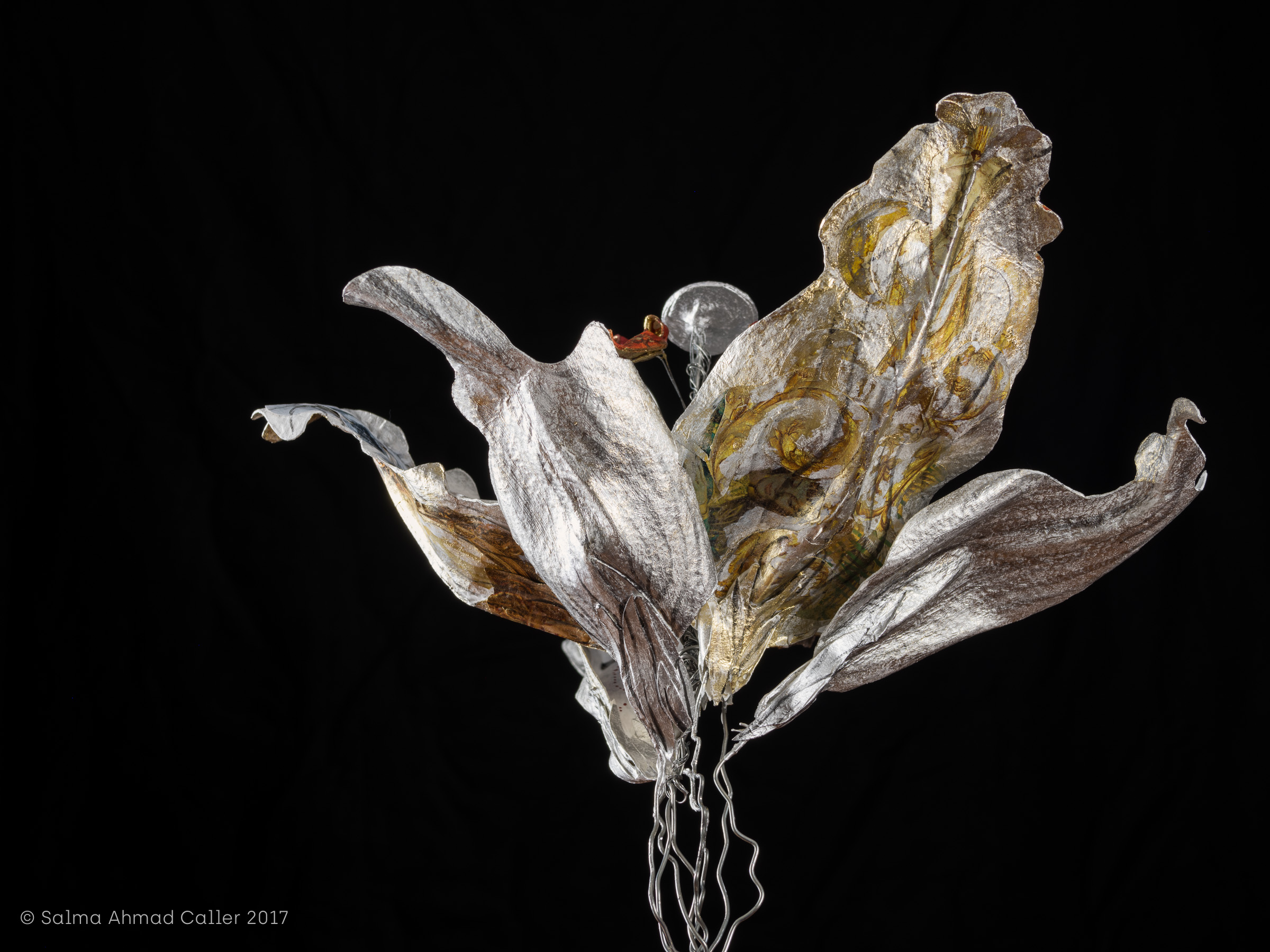“The Young Syrian: How beautiful is the Princess Salome tonight?
The Page of Herodias: You are always looking at her. You look at her too much. It is dangerous to look at people in such a fashion. Something terrible may happen.
The Young Syrian: She is very beautiful tonight.
First Soldier: The Tetrarch has a sombre aspect.
Second Soldier: Yes; he has a sombre aspect.
First Soldier: He is looking at something.
Second Soldier: He is looking at someone.
First Soldier: At whom is he looking?
Second Soldier: I cannot tell.
The Young Syrian: How pale the Princess is! Never have I seen her so pale. She is like the shadow of a white rose in a mirror of silver.”
“Criticism will annihilate race-prejudices, by insisting upon the unity of the human mind in its variety of forms”
Please scroll to the bottom of the page to see high resolution images of Lily 1 and Lily 2 – best viewed full screen if possible.
Taking a cross-cultural approach to the project: Oscar Wilde's beautiful and complex play Salome: A Tragedy in One Act has always intrigued me. It is a play full of cross-cultural, hierarchical and religious entanglements that create 'inappropriate' desires. My name is Salma, but had I been born into a Jewish family instead of a Muslim one, my name might have been Salome. Salome is a fierce and challenging character who fearlessly speaks her own forbidden desire. Several characters in the play would have been regarded as exotic and strange at that time – the Jewess Salome, the young Syrian Narraboth, Naaman the Black Slave executioner, the Nubian, and the Cappadocian. I have featured Salome and the Syrian but also in particular an alternative 'Black Slave' petal that conjures violent histories and other 'African' cultures and ways of being.
Does the play conform to misogynistic and orientalist stereotypes typical for this time?: I felt it did and it did not. Wilde’s portrayal of Salome has been hailed by some as feminist for its time. Even though she is a femme fatale of a kind, I did not find it a conventional negative portrayal of the predatory, deadly and lustful woman. She is bold, audacious, brave in the face of the patriarchal forces of Herod and John the Baptist, and pays for it with her life. The many Non-Western characters are exoticised yet have a strong clear voice apart from the executioner. Of course, the jury is still out on this verdict. We have to remember the times Oscar Wilde was writing in, and that colonialism and empire were on the rise.
Wilde's essays- The Decay of lying and The Critic as Artist: These are very revealing and fascinating texts. Oscar Wilde was progressive. He thought about racial prejudice, he explored the art of other cultures, he quoted a Muslim’s opinion on decoration. Wilde loved beautiful ‘exotic’ and ‘Eastern’ objects but he seems to have been quite aware of himself as being an outsider looking in at other cultures.
Ornament, beauty and meaning: My own work explores Orientalism, ornament and the body. I wanted to be part of this project to engage more deeply with Wilde’s notions and ideas about art and beauty, and particularly with the sensual ornamental language and imagery in his play Salome, written in 1891. Ornament has complex ways of meaning across different cultures. For Wilde beauty was vital, but ornament was also emotion and meaning, not just superficial decoration. The creative imagination was key to meaningful art, not just copying nature. The flat ornamental space free of perspective that Wilde said he longed to sit in, is in fact a multi-dimensional world of embodied meanings, touch, concept and feeling, as is ornamental and metaphorical language. These are ideas that excite and interest me.
The violence and danger of the gaze and an Imagery of black, white, moons and eyes: Looking is a very dangerous thing in Salome. The forbidden or taboo gaze or the strange gaze seems to me to be at the heart of the play. It is utterly fascinating and tragically funny. The ornamental language Wilde uses communicates these deep and complex meanings. Everyone is looking at someone they should'nt be looking at and it leads to their death.
There a rich and beautiful imagery of the moon, and a stunning contrasting of the colours black and white. I wanted to make a dramatic, theatrical and beautifully ornamental lily that worked with the imagery of the play. I also wanted the works to provoke questions and convey the notion of the dangerous or strange gaze that falls on those who are different without seeing them.
A message: In this work for me personally there is a message about looking at others, especially others from other cultures. Can we ever really see them? Or do we gaze at them as if into a mirror and only see our own desires reflected back?
Process and Making: I created the two lilies using 300 gsm rough watercolour paper, collage, gold and silver pigment, Indian ink, watercolour, graphite , acrylic and gesso, acrylic mirrors, and wire. Around a tiny moon mirror dance little Middle Eastern slippers, or little evil eye charms that reference notions of exoticism and orientalism. See more here.
Thank you to Suzanne Stallard of Jelly Reading (jelly.org.uk) for inviting me to this beautiful project.

